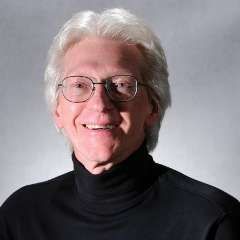One of the great pleasures of contemporary music, especially in the United States, is its exuberant disregard for boundaries. Classical, jazz, electronic, even progressive rock – there are strains of all that in the works of living composers, made engagingly clear and vivid in performances by the Bang on a Can All-Stars. Taking the stage at historic Finney Chapel on a frigid Saturday night in Oberlin, the group warmed a well-bundled crowd of friends, admirers and conservatory students with a rousing set of recent works and classics from its broad-ranging repertoire.
Founded in 1992 as an outgrowth of the Bang on a Can Marathon festival in New York, the All-Stars have grown into one of America’s premier modern music ensembles. Each of the six current members is a star in his or her own right, active in other groups and recording projects, and blazing new trails with individual efforts like Possessed, a series of solo improvisations in the rugged canyons of Utah by bassist Robert Black. The group regularly commissions new work from composers like Steve Reich, Michael Nyman, Louis Andriessen and Ryuichi Sakamoto. The long list of collaborators the All-Stars have worked with reflects the breadth of their interests and skills, ranging from avant-garde jazz saxophonist Ornette Coleman to Burmese drum master Kyaw Kyaw Naing to experimental hip-hop artist DJ Spooky.
David Lang’s Sunray got the evening off to a bright start with a series of sound clusters that took a sharp turn uptempo into jazz, with electric guitar player Mark Stewart and percussionist David Cosslin, on drum kit, banging out sharp, infectious rhythms. The piece ends with a cacophony of six instruments all playing different lines, a glorious noise that calls for expert discipline and precision. Lang was in the audience and took a bow afterward, clearly delighted to be back in familiar surroundings. He spent three years at Oberlin, and now has a daughter studying there.
Cellist Ashley Bathgate opened Julia Wolfe’s Believing with rapid-fire bursts of notes and never let up, driving a riveting array of repeating rhythms reinforced by Cosslin. Pianist Vicky Chow contributed electric keyboards, and all the players joined in layers of wordless vocals for the final breakneck riffs, which would have fit comfortably into a Jimi Hendrix set.
Kate Moore’s Ridgeway took the intensity up another notch, with all six players going full-blast before cutting suddenly to a dreamy riff that floated and soared, then returned to subterranean depths, sounding like an army of dwarfs pounding on anvils. Unrelenting and increasingly atonal, the piece could easily have fallen apart in lesser hands. But even borderline music breathes in this group’s playing, which is consistently seamless and organic. Moore’s work heaved and snarled, coming off the stage like the hot breath of a dark beast.
The All-Stars showed they can also be craftsmen with a composition like Michael Gordon’s For Madeline, a sequence of gauzy textures punctuated by swooping solo lines. Bathgate found some humor in hers, and Stewart put on a steel slide to coax some shimmering lines out of his guitar. Most impressive was the 3D dimensions the group gave to a relatively insubstantial piece, creating impressionistic aural structures.
A more conventional program would probably have closed with Steve Martland’s Horses of Instruction, a rock-flavored work that opened with fat, booming bass and drum riffs out of the King Crimson catalogue, then settled into rhythm-driven progressive jazz,with the players firing off quick solo lines and hitting extended grooves. Ken Thomson put down his clarinet and picked up a tenor sax to trade contrasting colors with Stewart and drive the piece to a blazing finish that drew whoops and cheers from the crowd.
“That one’s always a rouser,” Stewart acknowledged before introducing the finale, Philip Glass’s relatively subdued “Closer,” the final movement from his six-part Glassworks. The concert seemed to suddenly drop from 78 rpm to 33 1/3, but a flowing piano line from Chow and plaintive sax work by Thomson provided a pleasant ride off into the sunset. Or at least a warm glow to cap a bracing night of high-powered sounds.
Concerts like these make it hard to go back to the classical canon. Yes, there are always new interpretations to hear of the masterworks of Western music, and no end of dazzling soloists. But there’s nothing like the vitality of new ideas, brought to life by virtuoso players with sizzling energy and unabashed enthusiasm for the music. Roll over, Beethoven.


